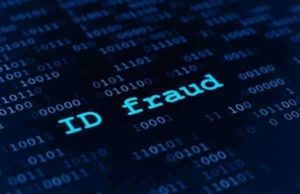Misrepresentation Explained

What is Fraud?
Fraud is defined as an illegal criminal act that consists of the – alleged – purposeful misleading of a victim in a harmful fashion; the motives that may exist within a fraud charge may be facilitated by the intention of gain through deceit.
Fraud is a broad classification within the legal spectrum, which can be manifested in a wide variety of forums and settings. Legality surrounding the personal privacy, space, and domain entitled to every citizen of the United States is considered undergoing a breach in the event of a fraud charge, which may include the unlawful use of personal records, documentation, and data belonging to another individual.
Legal Terminology Associated with Fraud
Scam: An illegal, deceptive, and structured plan undertaken in order to purposely defraud its participants
Identity Theft: The illegal assumption of the identity belonging to another individual with the hopes of gain and profit through fraudulent acts; identity theft may take place with the expressed intent of committing fraud, theft, exploitative acts, and harm with the hope of garnering personal profit or gain as result of their actions
Misrepresentation: The deliberate deception or misleading of individual – or entities – in order to fallaciously convey inaccurate information; this is a common theme that takes place within fraud charges
Falsification: The criminal act of and individual’s – or entity’s – attempt to present fallacious or fraudulent facts, documentation, or reports as legitimate or accurate; within the realm of identity theft, the falsification of personal documentation belonging to the victim of this type of fraud may take place in order to achieve economic gain
Counterfeit: The illegal and unlawful reproduction, circulation, or recreation of an item with the intent of defrauding individuals in the midst of purchase
How Does Fraud Take Place?
The prosecution of computer fraud includes any and all parameters with regard to the implicit legislation, decorum, legality, and ethics with regard to computer networks, the internet, electronic commerce, the online marketplace, and commercial activity taking place within a virtual setting; Online Identity theft may take place as a result of the unlawful acquisition of personal, private, and financial information belonging to the victims involved.
The classification of Financial Fraud is applicable to the activity, exchange, and the circulation of monies or currency; in the scope of a charge, financial fraud can occur in a variety of fashions, including the intrusion into the personal or private domain of another individual, clandestine electronic activity with the intent of unlawfully obtaining personal information, and the falsification of documents belonging to the victims of identity theft.
Misrepresentation Explained: Understanding the Types and Consequences
Misrepresentation is a term used in law to describe a situation in which one party makes a false statement to another party with the intention of inducing them to enter into a transaction. Misrepresentation can have significant consequences for both parties involved. This article will explore the types of misrepresentation that exist and the consequences associated with it.
What is Misrepresentation?
Misrepresentation is the act of making a false statement to induce someone to enter into a transaction. A misrepresentation can be oral or written, and it can be made intentionally or unintentionally. Misrepresentation can occur in various settings, such as in business transactions, insurance policies, and employment contracts.
Types of Misrepresentation
1. Innocent Misrepresentation: Innocent misrepresentation occurs when the person making the statement genuinely believes that the statement is true but later finds out that it is false. Innocent misrepresentation does not give grounds for the rescission of a contract.
2. Negligent Misrepresentation: Negligent misrepresentation occurs when the person making the statement does not believe that the statement is true and makes the statement without taking reasonable care to ensure its accuracy. The person making the statement is not intentionally trying to deceive, but the misrepresentation still leads to the wrongful inducement of the other party.
3. Fraudulent Misrepresentation: Fraudulent misrepresentation occurs when the person making the statement knows that the statement is untrue and makes the statement with the intention of inducing the other party to enter into a transaction. Fraudulent misrepresentation is the most severe type of misrepresentation and can result in the rescission of a contract, damages, or other legal remedies.
Consequences of Misrepresentation
The consequences of misrepresentation can be severe, depending on the type of misrepresentation and the harm caused. The following are some of the consequences of misrepresentation:
1. Rescission of Contract: If misrepresentation leads to the wrongful inducement of one party, the contract can be rescinded.
2. Legal Remedies: The party who has suffered harm can seek legal remedies such as damages or an injunction to stop further harm.
3. Criminal Consequences: In cases of fraudulent misrepresentation, criminal charges may be brought against the person making the statement.
Conclusion
Misrepresentation is a serious matter in the legal realm, with varying degrees of consequences depending on the type and extent of the false statement. Innocent, negligent, and fraudulent misrepresentations are the three main types of misrepresentation encountered in business contexts. The consequences of misrepresentation can vary from rescission of contract, legal remedies, and even criminal prosecution. It’s important to recognize misrepresentation, both having made it and as a victim of it to prevent complications down the line.






















